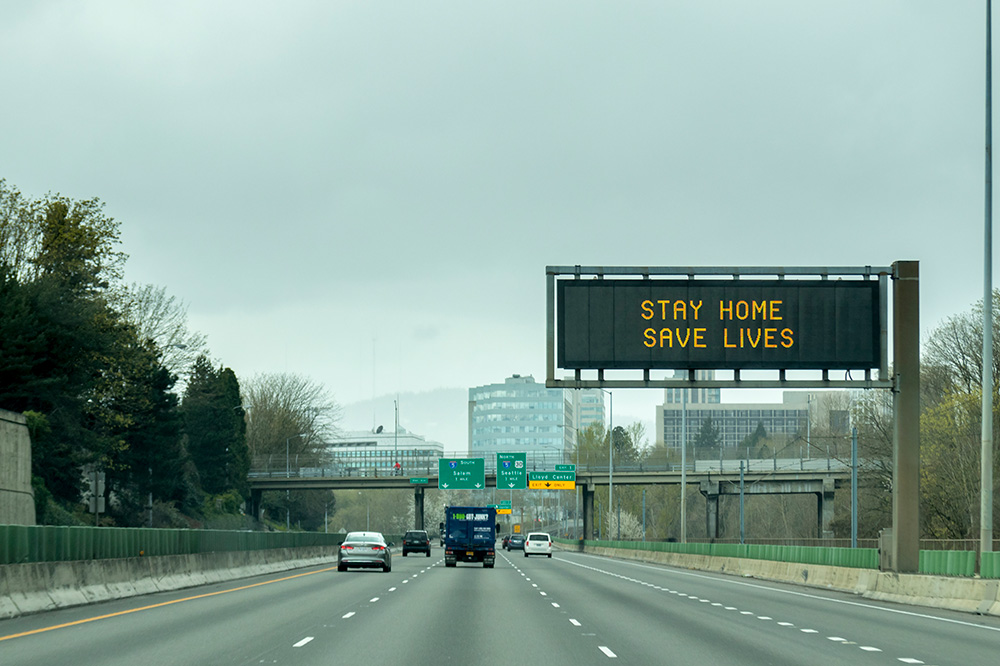
Recent research from The University of Texas at Dallas found that U.S. states’ stay-at-home orders in 2020 were effective at increasing the percentage of residents who did, in fact, stay at home during the early months of the COVID-19 pandemic, although there were differences in compliance due to sociodemographic disparities.
In a study published online Nov. 15 in the INFORMS journal Manufacturing & Service Operations Management, a Naveen Jindal School of Management researcher used anonymized mobile-device data to understand the effect of stay-at-home orders on residents’ mobility.
“The COVID-19 pandemic has affected many aspects of our lives, from school closures and job losses to hospitalizations and loss of life,” said Dr. Guihua Wang, assistant professor of operations management and the study’s author. “The effectiveness of stay-at-home orders has been the subject of ongoing debate since the outbreak of the pandemic.”
In the U.S., local and federal governments considered various measures to contain the spread of coronavirus. One of the strictest measures was the stay-at-home orders, which required residents to remain at home except for essential trips, such as grocery shopping or refilling a prescription. Those who violated the orders were subject to fines and, in some states, jail time.
On March 19, 2020, California became the first state to implement a stay-at-home order. A total of 42 states and the District of Columbia implemented similar orders during March and April 2020.

Some of the orders, also referred to as shelter-in-place or healthy-at-home advisories, required nonessential businesses to close to the public, which indirectly kept residents at home.
Wang’s investigation examined whether compliance with the orders differed among counties with varying percentages of vulnerable populations — a widely overlooked aspect, Wang said.
Wang obtained stay-at-home data from The New York Times, which included detailed information by county, including implementation dates and durations.
He also used mobile device data from the University of Maryland COVID-19 Impact Analysis Platform, which reported residents’ mobility based on data from mobile devices, government agencies and health care systems.
“One nice feature of the data is that the results are aggregated at the county level over different days, which allowed us to compare the mobility of residents in different counties before and after the implementation of stay-at-home orders,” Wang said.
County-specific data, obtained from the U.S. Census Bureau’s American Community Survey, provided information about residents’ demographics and socioeconomic status.
“Our results show that the orders increased the percentage of residents staying at home and, therefore, that the orders reduced the number of [nonessential] trips.”
Dr. Guihua Wang, assistant professor of operations management in the Naveen Jindal School of Management
The final sample included data from 3,095 counties from Jan. 1, 2020, to Oct. 31, 2020. The researcher compared the outcome trends of two groups: the counties that did not issue stay-at-home orders during the study period and the counties that did. In counties and cities that implemented stay-at-home orders earlier than their states, Wang said he used the implementation date of the counties or cities instead of the states because it better captured the effect of the orders.
From Jan. 1, 2020, to March 19, 2020, the two groups had almost the same percentage of residents staying at home.
Around March 11, 2020, the day the World Health Organization declared COVID-19 a pandemic, both groups had an increase in the percentage of residents staying at home.
The study found that although some residents already stayed at home before the implementation of any order, the stay-at-home orders increased the number of residents staying at home by 11.3%.
The orders were less effective for counties with higher percentages of residents who lacked health insurance or who were less educated.
“The main purpose of the stay-at-home orders was to reduce person-to-person contact by limiting the number of nonessential trips made by residents,” Wang said. “Our results show that the orders increased the percentage of residents staying at home and, therefore, that the orders reduced the number of trips.”
The researcher further analyzed the effect of the orders on the average number of work and nonwork trips per person. A work trip is defined as going to or coming home from the work location. Wang found that the orders reduced the number of work trips by 7.9% and nonwork trips by 6.5%.
“Interestingly, our results suggest that residents without health insurance or who did not attend high school were less likely to stay at home and reduce the number of work trips, in part, because they were more likely to work in jobs that did not allow them to work from home,” Wang said.
Using mobile-device data to understand users’ mobility patterns, shopping behavior and lifestyles is a growing trend.
“While collecting data without user consent is problematic, we did not face this issue because we obtained secondary data that was anonymized and aggregated at the county level,” he said.
Wang said the results of the study could be useful in the future to policymakers who seek to understand the effectiveness of stay-at-home orders on different populations.